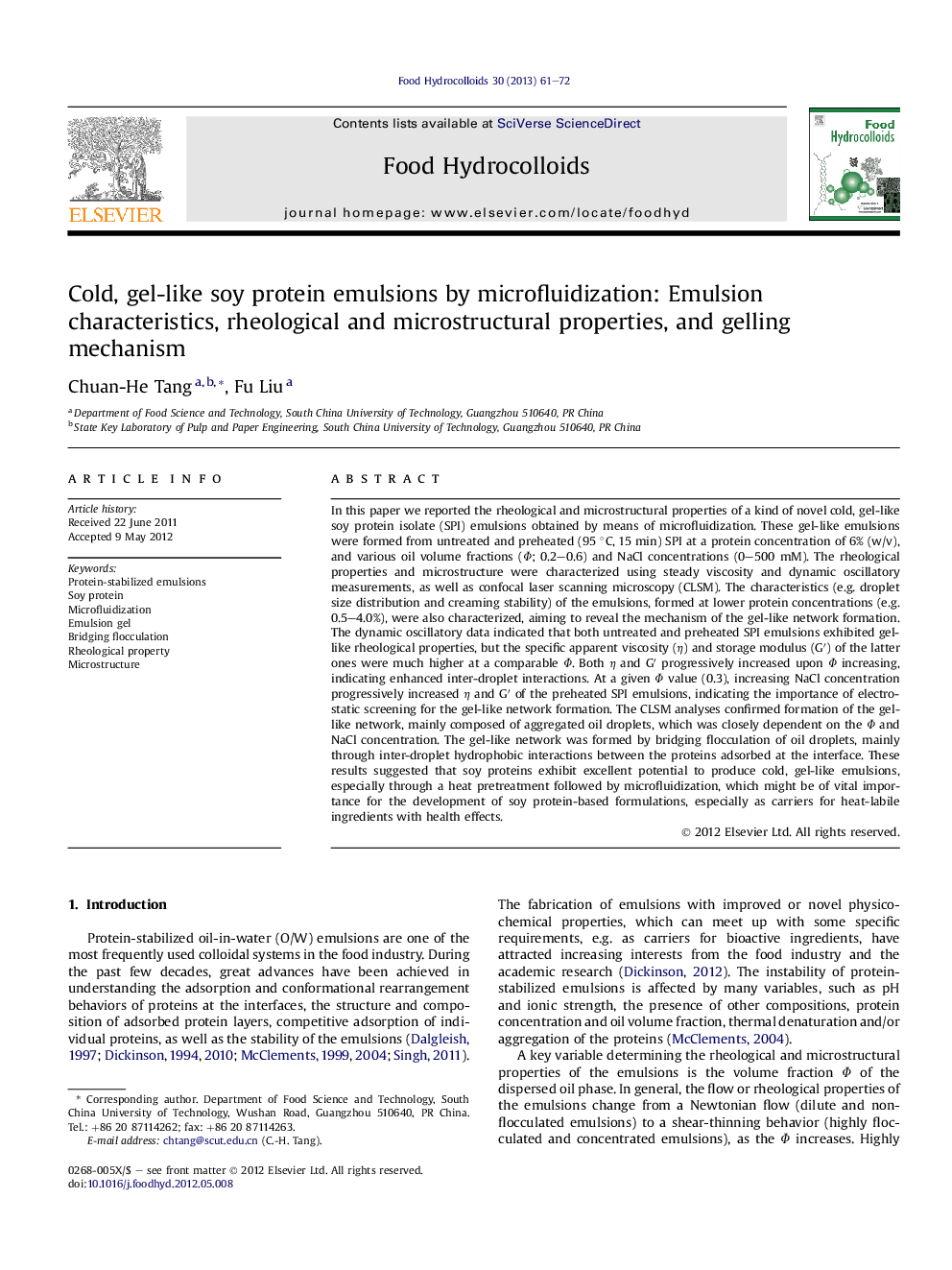| کد مقاله | کد نشریه | سال انتشار | مقاله انگلیسی | نسخه تمام متن |
|---|---|---|---|---|
| 604726 | 880321 | 2013 | 12 صفحه PDF | دانلود رایگان |

In this paper we reported the rheological and microstructural properties of a kind of novel cold, gel-like soy protein isolate (SPI) emulsions obtained by means of microfluidization. These gel-like emulsions were formed from untreated and preheated (95 °C, 15 min) SPI at a protein concentration of 6% (w/v), and various oil volume fractions (Φ; 0.2–0.6) and NaCl concentrations (0–500 mM). The rheological properties and microstructure were characterized using steady viscosity and dynamic oscillatory measurements, as well as confocal laser scanning microscopy (CLSM). The characteristics (e.g. droplet size distribution and creaming stability) of the emulsions, formed at lower protein concentrations (e.g. 0.5–4.0%), were also characterized, aiming to reveal the mechanism of the gel-like network formation. The dynamic oscillatory data indicated that both untreated and preheated SPI emulsions exhibited gel-like rheological properties, but the specific apparent viscosity (η) and storage modulus (G′) of the latter ones were much higher at a comparable Φ. Both η and G′ progressively increased upon Φ increasing, indicating enhanced inter-droplet interactions. At a given Φ value (0.3), increasing NaCl concentration progressively increased η and G′ of the preheated SPI emulsions, indicating the importance of electrostatic screening for the gel-like network formation. The CLSM analyses confirmed formation of the gel-like network, mainly composed of aggregated oil droplets, which was closely dependent on the Φ and NaCl concentration. The gel-like network was formed by bridging flocculation of oil droplets, mainly through inter-droplet hydrophobic interactions between the proteins adsorbed at the interface. These results suggested that soy proteins exhibit excellent potential to produce cold, gel-like emulsions, especially through a heat pretreatment followed by microfluidization, which might be of vital importance for the development of soy protein-based formulations, especially as carriers for heat-labile ingredients with health effects.
Figure optionsDownload as PowerPoint slide
Journal: Food Hydrocolloids - Volume 30, Issue 1, January 2013, Pages 61–72